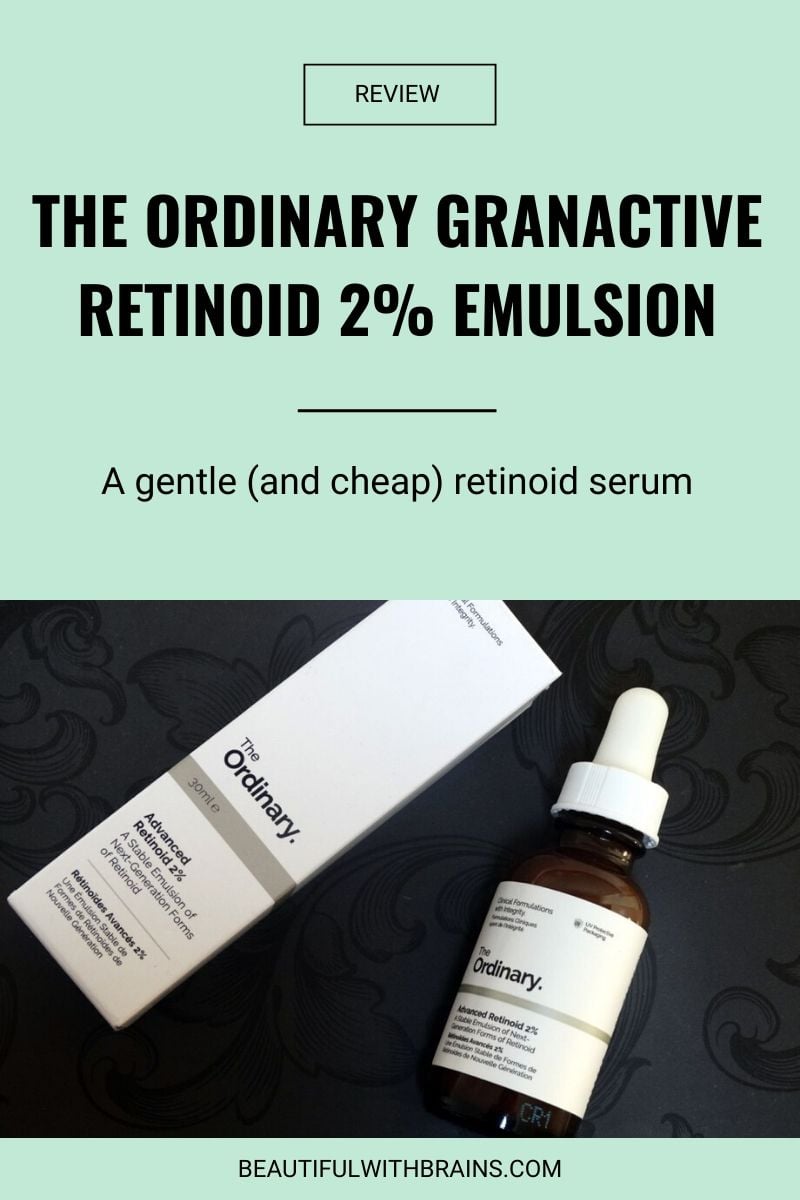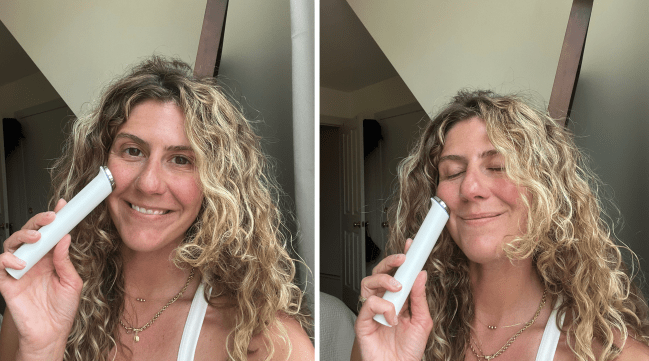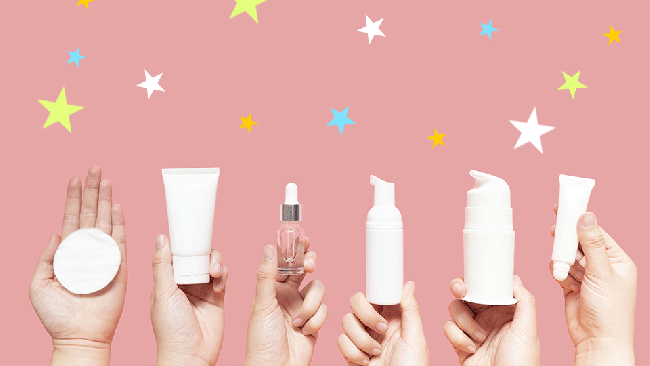
I love the beauty industry. I really do. I mean, I wouldn’t be a beauty blogger if I didn’t. But… there really isn’t much integrity here. For example, every extract and technology is made out to be innovative or groundbreaking even when it’s old news. Or the price hikes that make you think that serum or eye cream must work better than everything else you’ve tried before even though you know deep down it won’t.
The beauty world is dangerous for the naive. And incredibly frustrating for everyone. Why can’t we just have good products that really do what they say on the tin without the outrageous price tags and even more outrageous marketing?
That’s exactly what Brandon Truaxe, founder of Deciem, thought. His latest venture is The Ordinary, a skincare brand that “brings to market effective, more familiar technologies at honourable prices.” And there’s nothing ordinary about that (although, there should be, right?).
My first (of many) forays into the brand is the Granactive Retinoid 2% Emulsion (previously called Advanced Retinoid 2%), a serum made with the next generations of retinoids. And it’s only £11.00.
What’s In The Ordinary Granactive Retinoid 2% Emulsion?
GRANACTIVE RETINOID TO FIGHT WRINKLES AND ACNE
Granactive Retinoid (a.k.a. Hydroxypinacolone Retinoate) is the retinoid that gives the serum its name. From the name, you’ll think it contains 2%, right? Wrong. Let’s look at the fine print. The serum contains “a 2% concentration of Granactive Retinoid which is a complex of solubilized Hydroxypinacolone Retinoate (HPR).” Complex is the key word here.
According to the manufacturer, Granactive Retinoid is a solution of 90% Dimethyl Isosorbide and 10% Hydroxypinacolone Retinoate. That mean there’s around 0.2% Granactive Retinoid here. A far cry from the promised 2%…
But does it work, at least? Rumour has it, Granactive Retinoid is more effective than retinol at fighting wrinkles and acne. It simply isn’t true. There’s NO proof (yet) that Granactive Retinoid is more effective than retinol. Heck, there isn’t even much proof that it can fight wrinkles! That’s because this retinoid is so new, there isn’t much research on it, yet. The only things we know for sure are:
Future research may show that Granactive Retinoid is a valid alternative for fighting wrinkles as well. Until then, I recommend it only to women with sensitive, acne-prone skin that can’t tolerate retinol.
Related: Which Form Of Retinoids Is Right For You?
Need help creating an anti-aging routine that really works? Sign up to the newsletter below to receive the “Anti-Aging Skincare Routine Cheatsheet” (it includes product recommendations, too!).
RETINOL TO FIGHT PREMATURE AGING
Granactive Retinoid isn’t more powerful than retinol. It’s a good thing The Ordinary added that one here, too. Unfortunately, they don’t mention the concentration this time. But retinol works even in tiny doses, so we’re good here. Here’s what retinol does:
- It has antioxidant properties that destroy the free radicals that cause premature wrinkles and dark spots.
- It accelerates cellular turnover (i.e. the skin’s natural exfoliating process), reducing the appearance of dark spots, wrinkles, and acne.
- It boosts the production of collagen, the protein that keeps skin firm.
Warning: retinol can be irritating for first time users. Go slow and use it only a couple of nights a week to start with.
Related: The Complete Guide To Retinol: What It Is, What It Does, And How To Use It
BISABOLOL TO SOOTHE IRRITATION
Bisabolol is that thing that gives chamomile its incredible soothing properties. Here’s the deal: like all plants, chamomile is made up of hundreds of different compounds. Some of these are good for you (hello, bisabolol!). Others not so much… If you’re allergic to plants in the daisy family, chamomile can give you a bad rash.
Extracting Bisabolol from chamomile solves the problems. Now everyone can use it without side effects. Studies show Bisabolol reduces inflammation and helps wounds heal faster. P.S. The serum also contains another skin-soother: Tasmania pepperberry.
Related: The Complete Guide To Chamomile In Skincare: Should You Use It?
GLYCERIN TO HYDRATE SKIN
Let’s start with the basics. Glycerin is in pretty much ALL skincare products for a reason. It’s a wonderful humectant: that’s a fancy way of saying it draws moisture from the air and locks it into your skin. Once there, this extra moisture softens, plumps, and brightens your skin. That’s the base you want to build the rest of your skincare routine on.
Related:The Complete Guide To Glycerin In Skincare
The Rest Of The Formula & Ingredients
NOTE: The colours indicate the effectiveness of an ingredient. It is ILLEGAL to put toxic and harmful ingredients in skincare products.
- Green: It’s effective, proven to work, and helps the product do the best possible job for your skin.
- Yellow: There’s not much proof it works (at least, yet).
- Red: What is this doing here?!
- Aqua (Water): the base of almost every formula. Think of it as the “solvent” that dissolves other ingredients and makes everything spreadable on your skin.
- Caprylic/Capric Triglyceride: made from coconut oil and glycerin, this lightweight emollient makes your skin feel smooth without greasiness. It’s like a silky coat that also helps lock in moisture.
- Ethyl Linoleate: a fatty acid derivative that strengthens your skin barrier and helps calm down breakouts or inflammation. Basically, it’s barrier food.
- Propanediol: another humectant, meaning it hydrates, but it also helps other ingredients penetrate deeper into the skin. Bonus: gives products that nice, non-sticky glide.
- Dimethyl Isosorbide: think of this as the “Uber driver” for actives like retinol. It helps them travel deeper into your skin so they actually work where they’re supposed to.
- Cetearyl Isononanoate: a silky emollient that leaves your skin feeling soft, smooth, and non-greasy. It’s that luxurious slip you notice when applying a cream.
- Tasmannia Lanceolata Fruit/Leaf Extract: an Australian plant extract that’s antioxidant-rich and calming, especially good for soothing redness and irritation.
- Inulin Lauryl Carbamate: a skin-conditioning agent that doubles as a texture enhancer, keeping everything smooth and blendable.
- Glyceryl Stearate: an emulsifier that helps water and oil mix in the formula, but also softens skin by creating a light barrier.
- Ceteareth-12 & Ceteareth-20: emulsifiers that hold the formula together so your cream doesn’t split into oil and water layers. They also add a silky feel.
- Cetearyl Alcohol: don’t let the “alcohol” scare you. This is a fatty alcohol that softens skin, thickens the texture, and prevents the product from feeling watery.
- Carrageenan: derived from red seaweed, it gives creams their jelly-like smooth texture and helps hold moisture on the skin.
- Xanthan Gum: a natural thickener that keeps the formula stable and gives it that nice, gel-like consistency.
- Acacia Senegal Gum: another plant-based thickener and film-former. It helps give the product structure and leaves a light, tightening feel on the skin.
- Cetyl Palmitate: an emollient that makes the formula creamy and adds that soft, cushiony finish to your skin.
- Sucrose Laurate: a sugar-based emulsifier that also adds a silky slip to the formula. Keeps things smooth, non-greasy, and skin-friendly.
- Polysorbate 20: another emulsifier that helps mix oil and water, also works as a solubilizer for fragrance or extracts.
- Isoceteth-20: a mild cleansing/emulsifying agent that keeps the formula stable and helps it spread evenly on skin.
- Rosmarinus Officinalis (Rosemary) Leaf Extract: antioxidant + antimicrobial. It helps protect skin from free radicals and also acts as a natural preservative booster.
- Hydroxymethoxyphenyl Decanone: a synthetic antioxidant and anti-inflammatory. It helps calm irritation and defend against environmental stress.
- Behentrimonium Chloride: usually used in haircare, but here it conditions and softens. It also helps stabilize emulsions.
- Trisodium Ethylenediamine Disuccinate: a chelating agent that neutralizes metal ions in the formula, preventing your product from breaking down.
- Disodium EDTA: another chelator that keeps the product stable and helps preservatives work better.
- Dehydroacetic Acid: part of the preservative system, protecting against fungi and bacteria.
- Benzoic Acid: another preservative that prevents mold and bacteria from ruining your cream.
- Ethylhexylglycerin: preservative booster + skin softener. Makes preservatives gentler while giving a slight moisturizing effect.
- Phenoxyethanol: the main preservative here, preventing your product from turning into a petri dish.
- Chlorphenesin: another preservative with mild antimicrobial and anti-fungal activity, used alongside others for broader protection.
Texture
This stuff feels more like a light lotion than a serum. It’s creamy when you first pump it out, but it spreads really easily and doesn’t hang around on top of your skin. No greasiness, no tackiness – just a smooth finish that feels like your skin actually drank it up. If you hate those runny serums that drip everywhere or the heavy, oily ones that sit like a film, this one lands right in the sweet spot.
Fragrance
Like most of The Ordinary’s stuff, it doesn’t smell fancy – there’s no added fragrance here. What you get is that raw, “skincare lab” scent: a little medicinal, a little plasticky, but super faint and gone as soon as you rub it in. Basically, no one’s complimenting your “perfume” after this, but your skin will thank you.
How To Use It
Think of this like your PM power step. You’ll want to use it at night, after cleansing and before a heavier moisturizer. Start slow – two or three nights a week if you’re new to retinoids – and let your skin build tolerance. Always pair with sunscreen in the morning (non-negotiable, unless you want to undo all the work this thing is doing). Oh, and don’t layer it with strong exfoliating acids on the same night unless you’re looking for an irritation party.
Packaging
True to The Ordinary’s minimalist vibe, it comes in a simple frosted glass bottle with a pump. And honestly? I’m here for the pump – way less messy than droppers, and it gives you just the right amount for your whole face. It’s not glamorous, but it’s functional, sturdy, and does exactly what you need it to. The bottle is UV-coated, so the juice inside won’t be spoiled by light.

Performance & Personal Opinion
First things first: The Ordinary Granactive Retinoid 2% Emulsion doesn’t have a pleasant scent. But it’s so faint, I can easily put up with it. Actually, I’d easily put up with it even if it stank really badly because this stuff does some amazing things to my skin.
To be honest, I am a bit hesitant to try any retinoids at this time of the year. Now the temperatures are dropping fast, my skin tends to get drier and retinoids can dry it out even more. That’s what happened last winter. This time, there way absolutely no dryness or irritation. I can use this serum every other day and get smoother and glowing skin without the side effects. It’s so gentle, I suspect I could use it daily.
If you’ve never tried retinoids before, I still recommend you use it only once or twice a week to get started, just in case. But this is something that even mature and sensitive skin can safely use without fear. Ok, maybe if your skin is super super super sensitive, there may still be a tiny chance it’ll bother your skin, but it’s definitely the gentlest retinoid serum I’ve ever tried.
Yet, it works as well as all the other harsher retinoid serums. My skin now looks plumper. Its texture is smoother and more even-toned. It has a subtle glow to it. These are the immediate effects. After a few weeks (that’s how long it takes retinoids to work their magic on wrinkles), the serum also starts to target the signs of aging, such as wrinkles and dark spots, and make them smaller. Basically, it does everything a good retinoid serum should do. Minus the irritation. And the high price tag.
What I Like About The Ordinary Granactive Retinoid 2% Emulsion
- It doesn’t trash my skin barrier. No peeling, no flakes, just smooth, glowy skin.
- The price. Honestly, for what it does, it feels like you’re getting away with something.
- The texture’s easy – more like a light lotion than a greasy serum, so it actually feels nice to use.
- It gives me all the plump-and-glow benefits I’d expect from stronger retinoids, without the drama.
- Even my touchy winter skin can handle it, which is saying a lot.
What I DON’T Like About The Ordinary Granactive Retinoid 2% Emulsion
- The smell – not awful, but definitely not a “mmm skincare” moment either.
- If your skin throws tantrums over everything, there’s still a chance this could poke the bear.
- Like all retinoids, you need patience. Don’t expect wrinkles to vanish overnight.
- The packaging is very “no-frills lab sample.” Functional, but not exactly cute on your shelf.
Who Should Use It?
- This is a great pick if you’re curious about retinoids but don’t want to risk wrecking your skin barrier right out of the gate.
- Perfect for beginners, sensitive skin, or anyone who wants the anti-aging, brightening, and smoothing benefits without the usual flaking and redness.
- If your skin’s already a retinoid pro and you’re chasing something hardcore-strength, you might prefer a stronger formula – but honestly, this one still holds its own beautifully.
Does The Ordinary Granactive Retinoid 2% Emulsion Live Up To Its Claims?
| CLAIM | TRUE? |
|---|---|
| This product uses next-generation retinoid active technologies which have been shown to achieve better reduction in signs of aging than retinol without irritation. | They’ve been shown to be gentler than retinol, NOT to give you better results. |
| A creamy hydrating emulsion. | True. |
| a) A 2% concentration of Granactive Retinoid which is a complex of solubilized Hydroxypinacolone Retinoate (HPR). HPR is a highly-advanced form of retinoid which is, in fact, a non-prescription ester of all-trans direct retinoic acid that offers a multi-fold better effect against signs of aging than retinol, retinyl palmitate and nearly all other forms of non-prescription retinoid. | There’s NO proof it works better than all forms of non-prescription retinoids. |
Price & Availability
$12.10/£11.00 at Asos, Beauty Bay, Boots, Cult Beauty, SpaceNK, The Ordinary, and Ulta
Do You Need It?
If you’re looking for a starter retinoid serum for your sensitive, acne-prone skin, this is a great option to consider.
Aqua (Water), Glycerin, Caprylic/Capric Triglyceride, Ethyl Linoleate, Propanediol, Dimethyl Isosorbide, Cetearyl Isononanoate, Bisabolol, Hydroxypinacolone Retinoate, Retinol, Tasmannia Lanceolata Fruit/Leaf Extract, Inulin Lauryl Carbamate, Glyceryl Stearate, Ceteareth-12, Ceteareth-20, Cetearyl Alcohol, Carrageenan, Xanthan Gum, Acacia Senegal Gum, Cetyl Palmitate, Sucrose Laurate, Polysorbate 20, Isoceteth-20, Rosmarinus Officinalis (Rosemary) Leaf Extract, Hydroxymethoxyphenyl Decanone, Behentrimonium Chloride, Trisodium Ethylenediamine Disuccinate, Disodium EDTA, Dehydroacetic Acid, Benzoic Acid, Ethylhexylglycerin, Phenoxyethanol, Chlorphenesin.











